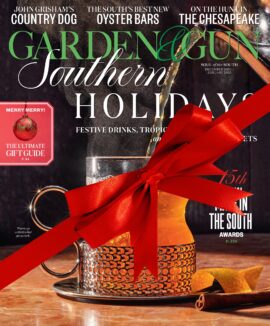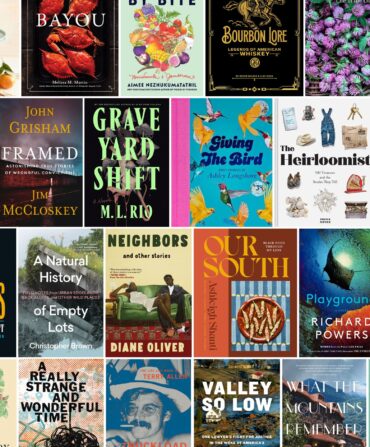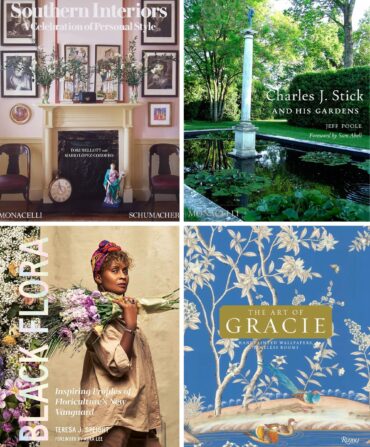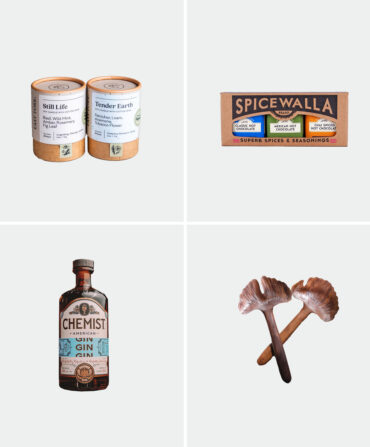
-
North Carolina: State of the Art
Winston-Salem, North Carolina
October 23-24You’d never guess the home to the finest collection of Southern decorative arts in the country is the hull of an old Kroger. But when the pioneering antiques dealer Frank L. Horton and his mother set up the endowment for the creation of the Museum of Early Southern Decorative Arts (MESDA) in Winston-Salem, pieces with Southern provenance were only just gaining the smallest shred of attention, which meant the designers of the exhibits had to work with what was easy—and cheap. Since then, the museum has become an internationally recognized, award-winning research institution and exhibition space, deserving of a home that reflects its current status. And now, as it marks its fiftieth anniversary, the place has never looked better. There are two new exhibit galleries, professional lighting, and brilliant, period-appropriate shades of antique red and turquoise on the walls—all highlighting unparalleled collections of ceramics, furniture, metalwork, and other objects crafted every-where from Appalachian homesteads to big-city workshops during the seventeenth, eighteenth, and nineteenth centuries. The exhibits have never looked fresher, and as with the original opening in 1965, the redesign “wasn’t a corporate effort, and it wasn’t a government effort,” says MESDA president Ragan Folan. “It was a grassroots effort.” Two birthday parties this year will raise additional funds for educational programs: BBQ, Bourbon & Bluegrass will take place in Horton Meadow next to the museum on October 23, while supporters fresh off a day of presentations and an open house will meet at the palatial Graylyn Estate for a formal Gala & Auction the following night. Join the revelry and help keep the dust off these impressive artifacts.—mesda.org
-
Alabama
Made By Hand
As an eight-year-old, Charlie Lucas found his life’s passion in his great-grandfather’s blacksmithing workshop, though he didn’t know it at the time. The son of an Alabama sharecropper, he struggled with severe dyslexia in school and during stints as a farmer and a hospital maintenance worker. Then, while recovering from surgery in his mid-thirties, he rediscovered a knack for metalwork. Today he is a folk artist with an international following, and one of the nearly three hundred craftspeople showing their creations at the Kentuck Festival of the Arts (October 17–18), one of the most respected artist gatherings in the country. A celebration of painting and pottery, quilting and glassblowing, and everything in between, the artisan-driven get-together in Northport is now in its forty-fourth year and only continues to grow. Many of the artists, some with pieces in the Smithsonian and other major metropolitan museums, return year after year to exhibit and sell their work in person, fostering a family-reunion-like atmosphere (sans matching T-shirts). Northport butts up against Tuscaloosa, but don’t worry; the Crimson Tide is on the road that weekend, so you should have a traffic-free trip.—kentuck.org
-
Arkansas
Every Pan For Itself
To some, sugar in cornbread makes about as much sense as using any mayonnaise other than Duke’s in a batch of pimento cheese. But at the Arkansas Cornbread Festival in Little Rock there’s room for all types—and tastes. The five-year-old event welcomes recipes from dozens of home cooks and professional chefs. You want bacon fat in your cornbread? Olives? Diced jalapeños? Go for it. In the past four years, attendees have sampled everything from old-fashioned skillet cornbread to deep-fried hot-water cornbread to squares of cornmeal cake with ice cream and berries, while local vendors dish chicken and dumplings, pulled pork, and more belly-filling accompaniments. Show up on November 7 to find out what’s baking in the skillet this year. With seemingly endless options, you’re bound to find a wedge that suits your fancy.—arkansascornbreadfestival.com
-
Florida
Showtime
John Ringling planned to open a Ritz-Carlton hotel on Longboat Key, outside Sarasota, back in the 1920s. A regional economic downturn left the project half-finished, however, until a new owner demolished it decades later. Instead, the circus magnate bought space in downtown Sarasota for the John Ringling Hotel. Perhaps he should have stayed under the big top because that establishment foundered, too, before none other than the Ritz-Carlton, Sarasota opened on the site fourteen years ago. Now the international hotelier has reimagined the five-star property once again. And when renovations are complete this fall, it will be filled with paintings and photographs by area artists and dressed in mellow blues and purples inspired by Sarasota sunsets. Watch as day turns to night from the waterfront balcony of the overhauled Club Lounge—a Ritz-Carlton hallmark. The champagne is on the house, and so are the key lime tarts.—ritzcarlton.com
-
Georgia
Big Shots
For a small town, Thomasville has a big reputation. Not only is it the quail capital of the South—more than a few presidents have hunted here—but it also draws those with green thumbs to an annual festival celebrating the more than two thousand rosebushes that grow within its limits. Now film buffs have a good reason to show up, too. The Covey Film Festival (October 8–17) is a parade of films organized around broad themes of nature and community: Little Africa is a short film about racial tensions in 1920s Oklahoma directed by a then-student at Florida State University; Who Owns Water is a documentary that takes a hard look at the decades-old battle between Georgia, Florida, and Alabama for the water rights to the Chattahoochee and Flint Rivers. Dissect plot points and cinematography or just kick back with a cocktail at the Masked Quail Ball, held at the historic Business Exchange building on the night of October 15. Proceeds from the festival benefit the Thomasville Community Resource Center, which helps foster education and health in this little slice of the Peach State.—coveyfilmfestival.com
-
Kentucky
Mane Event
After American Pharoah became the first horse in thirty-seven years to win the Triple Crown this June, many fans assumed that his racing career was over. Why gamble with the prospect of six-figure stud fees? But one big race remains before the end of the year, and his owner can’t seem to resist giving him another shot at victory. American Pharoah’s likely presence adds even more excitement to this year’s Breeders’ Cup World Championships (October 30–31), which is coming to Keeneland for the first time in the organization’s thirty-two-year history. Head to Lexington on October 31 for the Classic—the Cup’s largest purse—to find out if the champion has what it takes to capture what pundits are calling a Grand Slam. In twelve additional races, spanning the two-day event, dozens of other Thoroughbreds will compete for millions of dollars in prize money on one of the loveliest tracks in the country. Remember: In the Bluegrass State, it’s perfectly acceptable to stave off the autumn chill with a bourbon (or two), but a wise man places his bets before tipping back a third one.—breederscup.com
-
Louisiana
Dig In
The conversation isn’t all soil pH and compost chemistry at the twenty-seventh annual Southern Garden Symposium and Workshops (October 23–24), in St. Francisville. During a series of lectures at historic venues that include a century-old synagogue and the ruins of an antebellum estate, academics and everyday gardening enthusiasts from all over the country will dig in to modern Southern gardening practices. They’ll also celebrate the unique horticultural history of this lush corner of the world. Trish Aleshire, park manager at the Rosedown Plantation State Historic Site, will walk attendees through the careful resurrection of the property’s original nineteenth-century formal garden, complete with centuries-old camellias, sweet olives, and oaks. Skipping ahead a couple of hundred years, Dr. Larry Mellichamp, director emeritus of the UNC Charlotte Botanical Gardens, will discuss the growing trend of cultivating truly native plants; they not only are better suited to our warm climate but also better support indigenous birds, butterflies, and other wildlife. But don’t go unearthing your grandmother’s heirloom gardenia shrub (native to Africa and South Asia) just yet. The good doctor is equally fascinated by offbeat imports. He’s just fine with, say, an Andean monkey puzzle tree sharing sunlight with such common Southern perennials as purple coneflower and black-eyed Susan.—southerngardensymposium.org
-
Maryland
Going Coastal
Edward Lee grew up in Brooklyn, near Sheepshead Bay, but those who have eaten at his Louisville, Kentucky, restaurants or watched him on The Mind of a Chef know him as an advocate for the flavors of his adopted hometown: sweet sorghum, country ham, whiskey. Now, as he works on the evolving menu at his new restaurant, Succotash, in National Harbor, Maryland, you’ll find him proselytizing about the merits of high-salinity oysters and the invasive but surprisingly delicious blue catfish. “It’s like an ocean fish, if you can imagine a catfish as an ocean fish,” he says. “It’s clean and versatile. We’ve been doing everything from a traditional catfish fry to cold-smoking it.” With these kinds of ingredients to play with, Lee doesn’t mind dividing his time between the Bluegrass State and the banks of the Potomac. “I grew up near the water,” he says. “I’m excited to be a little bit more coastal.”—succotashrestaurant.com
-
Mississippi

Illustration: Illustrations by Tim Bower
Sound Effects
Emily Havens, the director of the Grammy Museum Mississippi in Cleveland, maintains that the state is the root of all American music. It’s a bold claim, but the museum does present some compelling evidence. Not only is Mississippi the undisputed birthplace of the blues, but it is also the home of the so-called father of country music, Jimmie Rodgers, and the king of rock and roll, Elvis Presley. Set to open on November 14, the museum, the first satellite location outside of Los Angeles, will host permanent and traveling exhibits that focus on the state’s diverse music heritage as well as broader histories of song and dance. It isn’t stuck in the past, though. With a dance floor, an interactive studio, and musical instruments available to the ticket-buying public, the museum hopes to lend a hand to the next generation of Magnolia State musical all-stars.—grammymuseum.org
-
South Carolina
Bach and Barbecue
Only when one of the world’s greatest living cellists, Yo-Yo Ma, passes his rosined bow across the strings of his eighteenth-century instrument and the first strands of composer Antonín Dvorák’s cello concerto fills the room on October 18 will the staff at the brand-new Gaillard Center in Charleston finally be able to relax. Six years and $144 million after the Holy City announced a major reconstruction of the old municipal auditorium, the center will reopen with the 1,800-seat Martha & John M. Rivers Performance Hall, built in the tradition of old-world European opera houses, along with exhibition galleries, event space, and gardens. Across town, John Lewis, of the critically acclaimed La Barbecue in Austin, Texas, will practice an entirely different art. At his new Charleston outpost, Lewis Barbecue, which is set to open this fall, he’ll serve brisket, beef ribs, sausage, and pork shoulder prepared to painstaking standards in smokers the pit master and his father built by hand. The restaurant will make a case for cattle-country specialties in a state where swine and mustard sauce reign supreme. If Mr. Ma and his entourage are in need of a postperformance snack, we have an excellent suggestion.—gaillardcenter.com; lewisbarbecue.com
-
Tennessee
Salvaged Beauty
Kim Leggett has a keen eye for a particular sort of trash turned treasure that draws droves of shoppers to her chic store, City Farmhouse, in Franklin, where she sells everything from twelve-foot farm tables to repurposed lighting to antique spittoons and restored bicycles. Over the past two years, Leggett’s annual City Farmhouse Pop-up Fairs have attracted thousands of eager pickers to her neck of the Tennessee woods, in search of stylishly worn pieces similar to the ones she finds for private clients such as Sheryl Crow and Ralph Lauren. This year, she’s added fall and winter dates to follow her successful spring one. The upcoming autumn show (October 16–17) will take place on the grounds of the 17,000-square-foot mansion of the late music publisher Buddy Killen in nearby Leiper’s Fork. Vendors from almost twenty states will fill the spacious property with a range of decorative pieces for home and garden, as well as handmade jewelry and clothing. Come with plenty of spare time—and a pickup truck.—cityfarmhousefranklin.com
-
Texas
Word Perfect
With cookbooks and graphic novels on display alongside thicker, weightier works of highbrow literature, the Texas Book Festival (October 17–18) in Austin is no academic snoozefest. “It’s not just for your book-club types,” says Steph Opitz, the festival’s literary director. Frontier fiction in the style of Lonesome Dove and The Last Picture Show will have plenty of shelf space at the festival, alongside nonfiction works that consider such subjects as the gentrification of Austin and Houston and modern-day crime along the Gulf Coast. Nearly three hundred authors will be on hand to share perspectives from the Lone Star State and beyond, including the acclaimed crime writer (and now Western novelist) Jeff Guinn and the Canadian science fiction master Margaret Atwood. To help as you contemplate which events to hit or miss this year, Opitz likens the book fest to a musical one: “It’s great to see the headliner, but it’s worth paying attention to the opening bands, and discovering those new authors.”—texasbookfestival.org
-
Virginia
Metal of Honor
As metals curator for Colonial Williamsburg, Janine Skerry oversees a collection of items that range from circa-1530 ingots to coffeepots commissioned by wealthy colonists, but she still loves to see silver on a contemporary table. “Southerners use their silver, much more than people in other parts of the country,” she says. Silver: From Mine to Masterpiece is a new exhibit that celebrates some of the most beautiful pieces from the sixteenth century to the antebellum era and explores the metal’s journey from the ground to the forge to tables past and present. Among more than 150 objects on display this fall at the DeWitt Wallace Decorative Arts Museum: a tea set made by Paul Revere, and a rare cream pot by Thomas You, a South Carolina silversmith. Once, these items were both practical purchases and long-term investments. “Silver had real value,” Skerry says. “It showed style and success, but if times got tough, you could also melt it down and sell it for its weight value.” Not that we would suggest taking your grandmother’s silver serving trays to the smelter if the Dow takes a tumble.—history.org/history/museums
-
Washington, D.C.
Jump To It
The Verizon Center has seen its share of spectacles, such as the time a forty-year-old Michael Jordan became the oldest NBA player to score more than forty points in a game. At the Washington International Horse Show (October 20–25), athleticism of a different—but no less dramatic—sort is on display. The exhibition features some of the finest equestrian athletes in the world—you may spot a future Olympian or two—hurtling over startlingly high obstacles for an audience of thousands. There is show jumping (the main event) as well as hunter and equitation competitions. Plenty of people buy tickets to see the pros, but attendees in the know stay to watch child riders leap tiny hurdles during the Shetland Pony Steeplechase, an event that draws both cheers and chuckles.—wihs.org
-
West Virginia
Leap Of Faith
When the giant feat of engineering known as the New River Gorge Bridge opened near Fayetteville, in 1977, it reduced a nearly hour-long trip through the winding pathways of the ancient river valley into a quick zip across 88 million pounds of steel and cement. The man-made marvel and the beautiful stretch of river it straddles are stunning whenever you go, but the best time to take it all in is Bridge Day (October 17), when it closes to car traffic. Stroll the expanse with thousands of other spectators, and watch as BASE jumpers plunge eighty-plus stories into the valley before deploying their brightly colored parachutes. This year, back by demand, is the Big Way, which sees a large group of the athletes simultaneously take the leap. You can join the free-falling fun yourself. The jumpers are friendly to first-timers, and there are a select number of tandem spots available each year.—officialbridgeday.com







